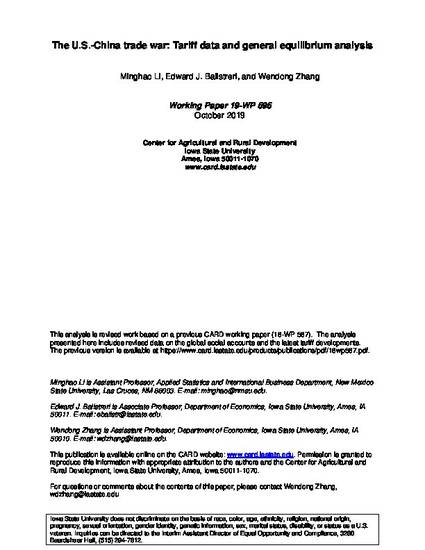
The current trade war between the United States and China is unprecedented in modern history. This study introduces a database of tariff increases resulting from the recent trade war and quantifies the impacts using the canonical GTAPinGAMS model calibrated to the recently released GTAP version 10 accounts. We find that the tariff increases as of September 2019 decrease welfare in China by 1.9% and welfare in the U.S. by 0.3%. Impacts on sectoral revenue are reported for both countries. China’s exports to and imports from the United States are reduced by 58.3% and 50.7%. Most of the reductions in bilateral trade are absorbed by trade diversion to other countries. The welfare and U.S.-China bilateral trade impacts are exacerbated by additional tariffs threatened by the United States and corresponding retaliations from China. Sensitivity analysis is conducted by increasing and decreasing import substitution (Armington) elasticities by two standard deviations. This has modest impacts on welfare and trade flow results.
Available at: http://works.bepress.com/wendong_zhang/81/
